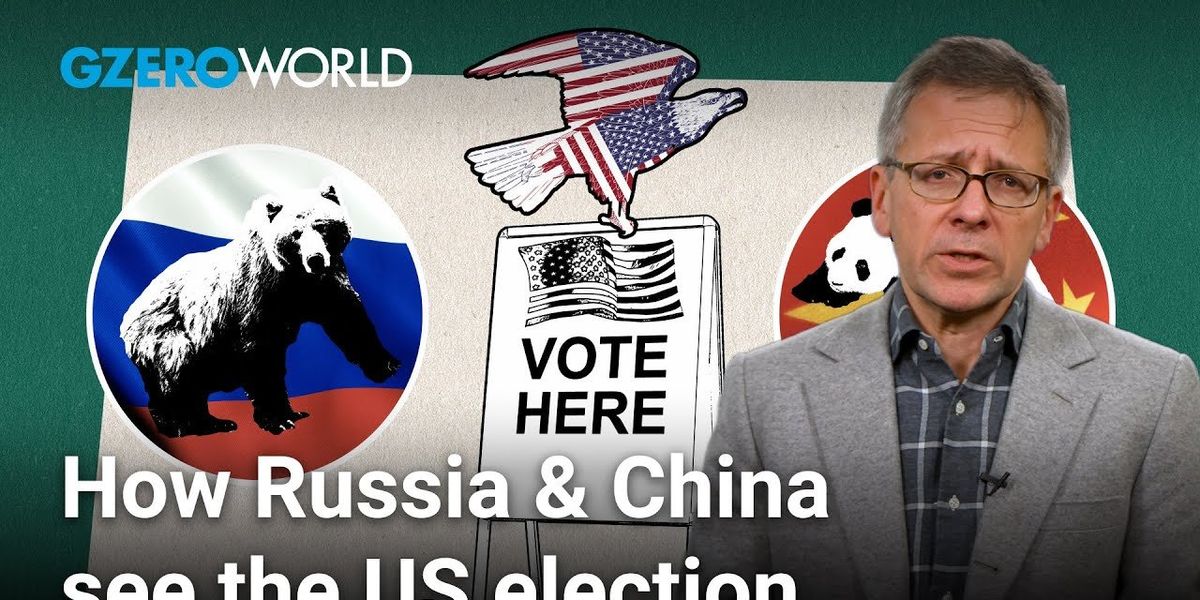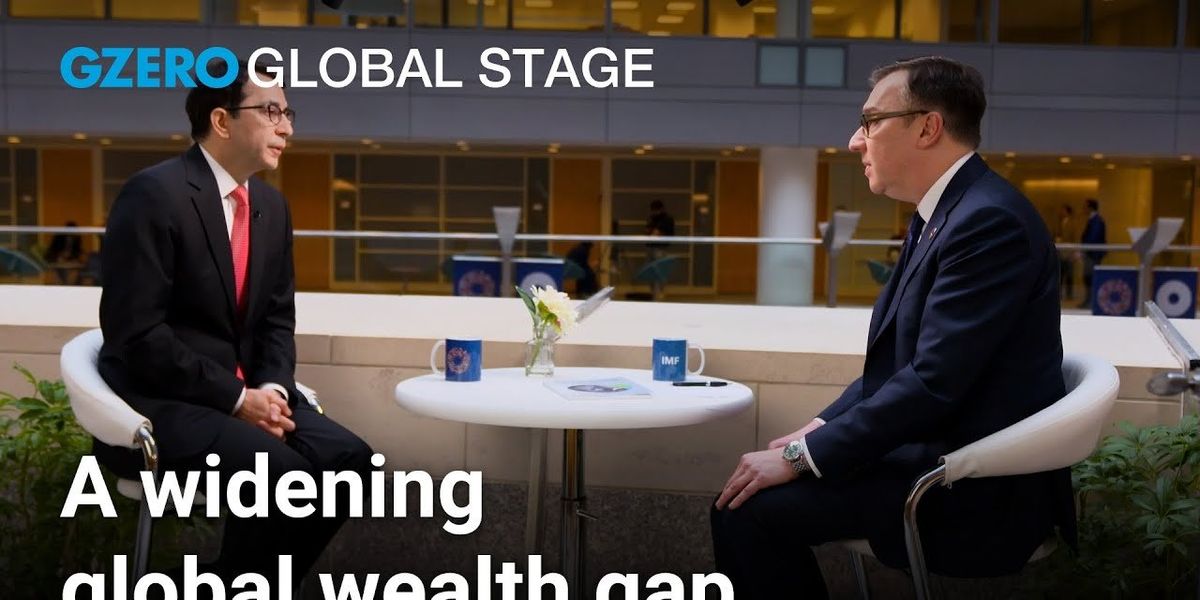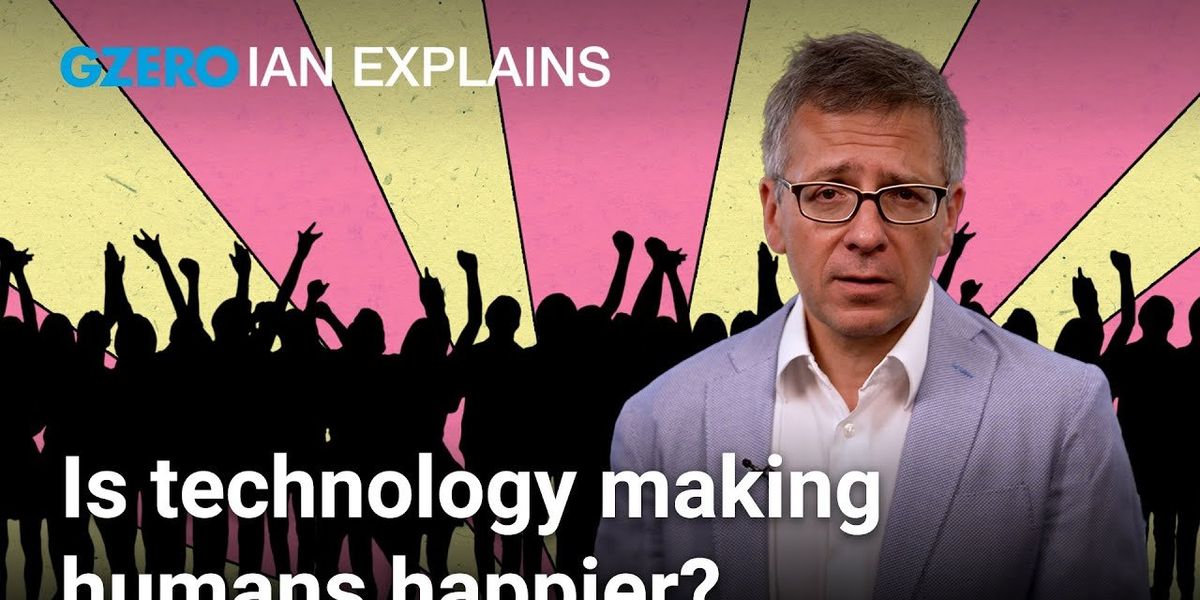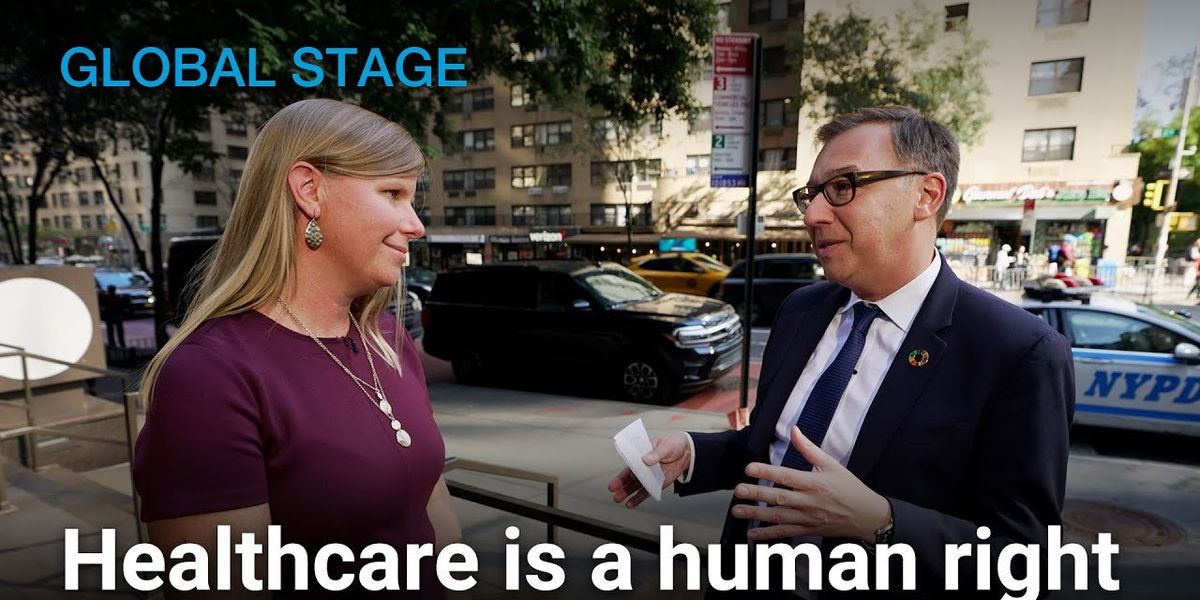Trending Now
We have updated our Privacy Policy and Terms of Use for Eurasia Group and its affiliates, including GZERO Media, to clarify the types of data we collect, how we collect it, how we use data and with whom we share data. By using our website you consent to our Terms and Conditions and Privacy Policy, including the transfer of your personal data to the United States from your country of residence, and our use of cookies described in our Cookie Policy.
{{ subpage.title }}
Municipality workers remove debris from the streets after flooding in Sheikh Jalal district, Baghlan province, Afghanistan May 12, 2024.
Hard Numbers: Devastating floods, COVID reporter released, Catalonia votes, Swiss contestant wins Eurovision
315: At least 315 people in northern Afghanistan have died in severe floods that also injured over 1,600 others, wiped out thousands of homes, and devastated livestock herds that feed the region. Aid agencies expect chaos. It’s been a bad month for floods worldwide — similar inundations in southern Brazil and Kenya have killed hundreds in recent weeks.
4: Lawyer and journalist Zhang Zhan has been released from prison in China four years after being detained for her reporting on the government’s draconian response to the COVID-19 outbreak. In jail, Zhang’s health suffered severely, with her weight dropping to below 90 lbs at one point. Her former lawyer says Zhang will either be returned home or sent somewhere to do a few months of “soft prison” time while cloistered from the rest of the world.
9: Candidates from nine parties competed for seats in local elections in the wealthy, independence-leaning Spanish region of Catalonia on Sunday, and the Socialist candidate supported by Prime Minister Pedro Sanchez is expected to squeak out a win. If no party wins a majority outright, the Socialists will likely need to hammer together a coalition to maintain control.
2: Students walked out on two major commencement speakers this weekend. Dozens of Duke graduates turned their backs on comedian Jerry Seinfeld, and Virginia Commonwealth University grads gave the same treatment to Gov. Glenn Youngkin. In addition to the walkouts, several more campuses saw major demonstrations surrounding their commencement activities.
Ian Explains: Who does China and Russia want to win the US election, Biden or Trump?
What do America’s biggest adversaries have to gain–and lose–from the US presidential election in November? The 2024 Donald Trump vs Joe Biden rematch will be the first time in US history that candidates from both major parties have sat in the Oval Office. So Russia and China have a pretty good idea of what a second term from either candidate might look like, as well as a vested interest in manipulating the outcome in their favor, Ian Bremmer explains on GZERO World.
From Russia’s perspective, the Kremlin has a long and documented history of influencing US elections for Trump. Intelligence agencies have confirmed Russia’s attempts to manipulate the 2016 and 2020 elections in his favor using social media bots, misinformation, bogus news sites, and hacking the Democratic National Committee’s emails. But now, intelligence experts and government officials warn China is copying Russia’s playbook, spreading conspiracy theories and misinformation online to amplify support for President Trump and sow distrust among American voters.
Yet Trump regularly attacks China on the campaign trail. He’s accused Beijing of unfair trade practices and currency manipulation. During the pandemic he publicly called Covid-19 the “China flu” and his administration imposed billions of dollars in tariffs on Chinese imports.
Why would Beijing support a candidate so openly hostile to its interests? Watch Ian Explains to find out why both China and Russia are eager for a Trump win in 2024.
Watch the upcoming episode of GZERO World with Ian Bremmer online and at US public television (check local listings). Subscribe to GZERO's YouTube channel and turn notifications on to get alerts when new episodes are published.
- NATO has a Trump problem ›
- For China, Russia, and Israel, patience is a virtue in 2024 ›
- US-Ukraine policy under Trump would be similar to Biden's ›
- Trump: I would encourage Russia to attack 'delinquent' NATO allies ›
- Can Trump, aka Teflon Don, still get elected with a guilty verdict? - GZERO Media ›
- At the 2024 Paris Olympics, security fears and logistical challenges abound - GZERO Media ›
- Ukraine's capture of POWs undermines Russia's narrative - GZERO Media ›
- How Trump's tariffs could help (or hurt) the US economy - GZERO Media ›
- Get ready for Trump's team of China hawks, warns The New Yorker's Susan Glasser - GZERO Media ›
- Is President Trump's Russia pivot a win for China? - GZERO Media ›
World Bank economist: The poorest are getting poorer globally
It’s a staggering statistic and a marked setback from the years before the COVID-19 pandemic—the world’s poorest countries are falling further behind, and the wealth gap between the least and most developed nations is growing. One in three of these countries is poorer today than in 2019.
Ayhan Kose, World Bank Group’s Deputy Chief Economist, said that the combined shocks of multiple crises, including the pandemic, wars in Ukraine and the Middle East, food insecurity, and inflation, have taken a massive toll on the 75 least developed economies.
Kose spoke to GZERO’s Tony Maciulis as the annual Spring Meetings of the World Bank and the International Monetary Fund were underway this week in Washington, DC.
“When the food price goes up, the price of oil goes up. That has significant implications for these economies,” he told GZERO. “Where we are now, when you look at 2020-24, they registered the weakest growth rate on average since the 1990s.”
In many ways, the global economic outlook presented this week tells a tale of two post-pandemic realities. Kose explained that the most developed nations, particularly the US, showed greater resilience than expected early in 2023, and the threat of recession has been kept at bay. However, the negative impacts on poor countries, many of which are in Sub-Saharan Africa, cannot be ignored and could lead to greater geopolitical risk and humanitarian emergencies.
This week, World Bank leaders are calling for a renewed commitment to the International Development Association (IDA), which provides zero-interest loans and grants to nations most in need. Kose said the risk associated with crippling sovereign debt has caused some private sector funding to dry up and that politics and protectionism are impacting how wealthier nations approach funding.
But he also pointed to enormous opportunity in nations that are IDA-funded, including a younger population that could serve as a future global workforce and rich natural resources.
With proper investment and funding, he explained, other developing countries have been lifted to find sustained growth.
“At the end of the day history is full of examples. China, India, Indonesia, Chile, (South) Korea. They all used to be IDA borrowers. They were poorer countries. They became much richer.”
For more of our 2024 IMF/World Bank Spring Meetings coverage, visit Glogal Stage.
- What We're Watching: Nigerians vote, Biden's World Bank pick ›
- What We’re Watching: Terror in Kyiv, World Bank/IMF meetings ›
- Podcast: Fix the global debt crisis before it's too late, warns World Bank's David Malpass ›
- Debt limits of rich countries hurt poor countries' growth, says World Bank's Malpass ›
- World Bank's David Malpass on global debt & economic inequality ›
- How to tackle global challenges: The IMF & World Bank blueprint - GZERO Media ›
How can the world build back better public health after COVID?
Every year, over ten million people globally die from high blood pressure, more than all infectious diseases combined. Dr. Tom Frieden, former director of the Centers for Disease Control, is tackling this massive problem in public health, among many others, as CEO of Resolve to Save Lives.
He told GZERO’s Tony Maciulis that ensuring easy access to three drugs — amlodipine for blood pressure, metformin for blood sugar, and atorvastatin for cholesterol — could save tens of millions of lives over the next quarter century for just a penny per pill.
It’s part of a set of goals Frieden calls the three Rs: Renaissance in public health, robust primary healthcare and resilient populations. But as the developing world takes on more and more public debt, where will the money come from?
See more from Global Stage.
Ian Explains: Is the world better today thanks to human progress?
Human progress doesn’t have a finish line.
Our body clocks stop ticking at some point, but that’s not the same as reaching a destination, or achieving a goal. So how do we—as a community, as a country...as a world—define progress? What does “better” even look like?
In a word: laundry.
In 1920, the average American spent 11.5 hours a week doing laundry (and that average American was almost always a woman). By 2014, the number had dropped to 1.5 hours a week, thanks to what renowned public health scholar Hans Rosling has called QUOTE "greatest invention of the Industrial Revolution,”: the washing machine. By freeing people of washing laundry by hand, this new technology allowed parents to devote more time to educating their children, and it allowed women to cultivate a life beyond the washboard.
So, as I always say to myself whenever I’m stuck in traffic or on hold with customer service, there has never been a better time to be alive. And yet...And yet...And yet... War in Europe. Famine in Africa. Global pandemics. Fake news. Conspiracy theories. Democracy dying in the bright light of day. And that’s just your average Tuesday. So how much is technology making our lives better, and how much is a part of the problem?
Watch the GZERO World episode: Is life better than ever for the human race?
Catch GZERO World with Ian Bremmer every week at gzeromedia.com/gzeroworld and on US public television. Check local listings.
- What Ukraine's digital revolution teaches the world ›
- “Health is a human right”: How the world can make up progress lost to COVID ›
- Staving off default: How unsustainable debt is threatening human progress ›
- Is life better than ever for the human race? - GZERO Media ›
- CRISPR, AI, and cloning could transform the human race - GZERO Media ›
“Health is a human right”: How the world can make up progress lost to COVID
The state of public health in the developing world bears some deep scars from the COVID-19 pandemic. Over the past three years, immunization rates have dropped to levels not seen in three decades. 2 billion people are facing "catastrophic or impoverishing" health spending worldwide according to the World Health Organization. And governments in the Global South are taking on more and more debt at the expense of investment in health and social services.
Kate Dodson, the Vice President of Global Health Strategy at the UN Foundation, is on the frontlines of the fight to give the most vulnerable people in the world access to proper healthcare. She works to connect experts and innovators with the UN, and find resources to support their work.
She’s calling on governments to invest in basic elements of public health, including primary care access, and properly remunerating healthcare workers — the majority of whom are women, worldwide. And more fundamentally, she wants leaders to treat health as a human right that all deserve to enjoy.
More from Global Stage: https://www.gzeromedia.com/global-stage/
- Can surveillance prevent the next pandemic? ›
- Highlights from our live discussion on post-pandemic health security ›
- Eris on the rise ahead of predicted fall COVID wave ›
- China's COVID lockdowns made its people depressed and hurt its economy ›
- Ian Explains: Is the world better today thanks to human progress? - GZERO Media ›
- How can the world build back better public health after COVID? - GZERO Media ›
- Is life better than ever for the human race? - GZERO Media ›
A medical worker administers a nasal swab to a patient at a coronavirus disease (COVID-19) testing center
Hard Numbers: COVID hospitalizations, fiery moves, banking job cuts, traffic jams
21.6 & 7: Data from the CDC and Canada’s government show that, since last week, COVID-19 hospitalization rates have risen in the US and Canada by 21.6% and 7%, respectively. The Canadian number seems low, but it follows an 11% increase the week before, putting hospitalizations 20% percent higher than they were last year. Both countries are seeing increases in positive cases – early signals that a fall COVID wave could be approaching while updated booster shots are still weeks away.
13: Following the wildfire summer from hell and the smoky conditions of the past two years,13% of Canadians say they would consider relocating to a place that feels safer, according to a new Angus Reid survey. Many have seen their health problems worsen because of the poor air quality during this record-breaking wildfire season.
2: The Royal Bank of Canada, the Toronto Stock Exchange’s most valuable company, is cutting 2% of its workforce – despite making Q3 profits that towered over the other Big Six banks. Following an earlier cut in May, it has just announced that it will cut another 2% of its workforce this quarter. It cites overhiring and the need to set aside capital for potential credit losses due to rate hikes.
199 vs. 236: This could drive folks crazy. Drivers in Toronto spend 199 hours a year in rush hour traffic, and in New York City, they can expect to spend a whopping 236 hours stuck idling each year. Hollywood star Tom Cruise recently criticized Toronto’s traffic during an interview for his “Mission Impossible” (he shot the movie there) tour. But, according to this study by the UK’s Nationwide Vehicle Contracts, Cruise’s mission would’ve been even more impossible in the Big Apple.Medical profession administers a COVID-19 test
Eris on the rise ahead of predicted fall COVID wave
A new COVID subvariant, EG.5 or Eris, is on the rise in the US and Canada. The World Health Organization has classified it a variant of interest and is monitoring it in the run-up to autumn, when students head back to school and people spend more time indoors.
The WHO compares it to other current variants and says it poses a low risk. In the US, where Eris accounts for 17% of COVID cases nationwide, experts are telling people to keep an eye on it. It’s also on the rise in Canada, where it’s predicted to be responsible for 36% of cases this month. The country’s new health minister, Mark Holland, says he is monitoring the situation “very closely.”
In recent weeks, COVID hospitalizations have increased globally, blamed in part on the more-contagious Eris. With some speculating that the fall uptick in cases has already arrived, autumn boosters are still on their way … and there’s no guarantee people will line up to get them. The CDC reports that as of May, 85.8% of the US population aged 5 and older have had at least one vaccine, 73.5% have had two doses, and only 18% have received the bivalent booster.
Health Canada reports that 83.2% of Canadians have had at least one dose, with 80.5% completing the series. Based on the latest data, in the last six months, only 5.7% of Canadians completed their primary series of vaccines or received a booster as of June 23 (figures exclude Quebec).
The rub: COVID jabs are not front of mind for most folks, and health authorities hope that will soon change.
The fall booster, due in late September, is a new formulation targeting XBB variants. Canada recommends getting a fall shot and is providing boosters to those who want one. The US government, meanwhile, will no longer pay for public COVID vaccines. It’s moving to a commercialized model, but Moderna has promised to offer shots for free to uninsured Americans.



